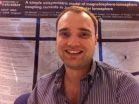(Press-News.org) Wildlife conservationists are well aware of the potential conflicts that exist between the endangered species they seek to protect and the human populations which inhabit areas where the animals live. Carnivores, such as tigers, pose a risk to humans and their livestock and can be killed because of this potential risk. Previous research has found that killing of animals can be motivated as much by social and psychological factors, such as perception of danger, as by any actual real risk posed by a species.
A new study published in the Springer journal Human Ecology has identified several key factors which may contribute to perceptions of risk from tigers in a conservation area in Bangladesh. The study, by Chloe Inskip and her colleagues from the Durrell Institute of Conservation and Ecology in Kent, UK, and WildTeam, Bangladesh, is the first to use participatory risk mapping (PRM) and in-depth interviews to explore the wider socio-economic context of human-tiger conflict.
The survey was carried out around the Sundarbans mangrove forests of south-western Bangladesh, home to one of the world's largest remaining tiger populations. Although there are no human inhabitants of the Sundarbans, eight sub-districts with a total population of around 1.7 million people lie directly adjacent to the forest boundary. Records indicate that approximately 30-50 people are killed annually by tigers in the area.
The researchers held 54 semi-structured interviews in six villages which border the Sundarbans forest, followed by 385 questionnaires in a further ten border villages. Of all the issues related to lives and livelihood, tigers were the most commonly reported problem. Other issues recorded were largely poverty-related including low incomes, dependence on natural resources, poor infrastructure and services and a lack of clean water together with soil erosion and weather. Inskip and her colleagues identified the fact that these issues had a direct impact on villagers' perceptions of risk from tigers. The respondents' perceived susceptibility to and their ability to mitigate human-tiger conflict was influenced largely by their poverty related-problems.
The authors suggest that any actions taken to improve these socio-economic issues will also reduce the perceived level of risk from tigers and help to reduce the rate at which tigers are killed. For conservationists, this would mean a shift from traditional models of conflict reduction to holistic models which also incorporate situation-specific actions to reduce risk perceptions. In many poor, rural communities in conservation areas such as the Sundarbans, risk perception reduction is likely to be tied strongly to poverty alleviation.
The authors believe that the abatement of killing endangered species will only be achieved if the human dimensions and social context of human-wildlife conflict situations are well understood and appropriately managed. They conclude that "participatory risk mapping (PRM) and qualitative research are valuable tools for enhancing understanding of and identifying actions to address the wildlife-related risk perceptions which can influence killing behavior." Addressing risk perceptions will require long-term commitment and funding.
###
Reference
Inskip C et al. (2013) Human-tiger conflict in context: risks to lives and livelihoods in the Bangladesh Sundarbans. Human Ecology; DOI 10.1007/s10745-012-9556-6
The full-text article is available to journalists on request.
Human-tiger conflict: Are the risks overestimated?
Study finds a complex web of factors increases perceived risk of tiger attack in the Sundarbans of Bangladesh
2013-01-22
ELSE PRESS RELEASES FROM THIS DATE:
Mama bear knows best, University of Alberta study shows
2013-01-22
Mama bear appears to know best when it comes to selecting a place to call home, according to a new University of Alberta study.
The study, published in the latest issue of PLOS ONE, explored whether the rearing of cubs by their mothers shaped which habitats grizzly bears eventually choose.
The findings "suggest that habitat selection is learned by young grizzly bears from their mothers, and would likely be a more adaptive strategy than using instinct," said lead author Scott Nielsen, assistant professor in the U of A Department of Renewable Resources.
The University ...
New evidence indicates auroras occur outside our solar system
2013-01-22
University of Leicester planetary scientists have found new evidence suggesting auroras – similar to Earth's Aurora Borealis - occur on bodies outside our solar system.
Auroras occur on several planets within our solar system, and the brightest - on Jupiter – are 100 times brighter than those on Earth. However, no auroras have yet been observed beyond Neptune.
A new study led by University of Leicester lecturer Dr Jonathan Nichols has shown that processes strikingly similar to those which power Jupiter's auroras could be responsible for radio emissions detected from ...
Penn study sheds light on the complexity of gene therapy for congenital blindness
2013-01-22
PHILADELPHIA - Independent clinical trials, including one conducted at the Scheie Eye Institute at the Perelman School of Medicine, have reported safety and efficacy for Leber congenital amaurosis (LCA), a congenital form of blindness caused by mutations in a gene (RPE65) required for recycling vitamin A in the retina. Inherited retinal degenerative diseases were previously considered untreatable and incurable. There were early improvements in vision observed in the trials, but a key question about the long-term efficacy of gene therapy for curing the retinal degeneration ...
Study: Bariatric surgery in extremely obese adolescents
2013-01-22
This time of year many people make resolutions to live a healthier lifestyle, exercise more, lose weight and eat better. For the adolescents who are extremely obese in this country, diet and exercise alone often are not enough to get their weight down. Some of those teens will require weight loss surgery to improve their overall health. According to a recent study published in the January print issue of the Journal of Pediatric Surgery, bariatric surgery in extremely obese adolescents also was shown to be beneficial in helping to reverse previously undiagnosed cardiovascular ...
UBC research: Forget about fair – It's better when bosses pick favorites
2013-01-22
A new study from the University of British Columbia Sauder School of Business shows that bosses should pick favourites if they want top performing teams.
"Conventional wisdom tells us that we should treat everyone the same to create a collegial and productive work atmosphere," says Sauder Professor Karl Aquino, who co-authored the forthcoming study for the Journal of Business Ethics. "But our research shows this can be a disincentive for workers who would otherwise go above and beyond on behalf of the team with a little bit of extra attention."
In a series of experiments, ...
A relative from the Tianyuan Cave
2013-01-22
This press release is available in German.
An international team of researchers including Svante Pääbo and Qiaomei Fu of the Max Planck Institute for Evolutionary Anthropology in Leipzig, Germany, sequenced nuclear and mitochondrial DNA that had been extracted from the leg of an early modern human from Tianyuan Cave near Beijing, China. Analyses of this individual's DNA showed that the Tianyuan human shared a common origin with the ancestors of many present-day Asians and Native Americans. In addition, the researchers found that the proportion of Neanderthal and Denisovan-DNA ...
Enzyme replacement therapy shows promising results in X-linked myotubular myopathy
2013-01-22
A collaborative research team including a Medical College of Wisconsin (MCW) pediatric neuropathologist successfully mitigated some of the effects of a muscular disease by using a new targeted enzyme replacement therapy strategy from 4s3 Bioscience.
The findings are published in the January edition of Human and Molecular Genetics http://hmg.oxfordjournals.org/content/early/2013/01/09/hmg.ddt003.full.pdf+html.
X-linked myotubular myopathy (XLMTM) is a severe muscle disease caused by an absence of a protein called myotubularin. There is currently no treatment for this ...
New 2D material for next generation high-speed electronics
2013-01-22
Scientists at CSIRO and RMIT University have produced a new two-dimensional material that could revolutionise the electronics market, making "nano" more than just a marketing term.
The material – made up of layers of crystal known as molybdenum oxides – has unique properties that encourage the free flow of electrons at ultra-high speeds.
In a paper published in the January issue of materials science journal Advanced Materials, the researchers explain how they adapted a revolutionary material known as graphene to create a new conductive nano-material.
Graphene was ...
Study of how eye cells become damaged could help prevent blindness
2013-01-22
Light-sensing cells in the eye rely on their outer segment to convert light into neural signals that allow us to see. But because of its unique cylindrical shape, the outer segment is prone to breakage, which can cause blindness in humans. A study published by Cell Press on January 22nd in the Biophysical Journal provides new insight into the mechanical properties that cause the outer segment to snap under pressure. The new experimental and theoretical findings help to explain the origin of severe eye diseases and could lead to new ways of preventing blindness.
...
Controlling spine metastases with tumor 'separation surgery' and high-dose stereotactic radiosurgery
2013-01-22
Charlottesville, VA (January 22, 2013). Researchers from Memorial Sloan-Kettering Cancer Center (New York, NY) have found that tumor "separation surgery" followed by high-dose hypofractionated stereotactic radiosurgery (SRS) or high-dose single-fraction SRS is safe and effective in controlling spinal metastases regardless of the radiosensitivity of the particular tumor type that has invaded the spine. This finding is fleshed out in the article "Local disease control for spinal metastases following 'separation surgery' and adjuvant hypofractionated or high-dose single-fraction ...
LAST 30 PRESS RELEASES:
Understanding the role of linear ubiquitination in T-tubule biogenesis
Researchers identify urban atmosphere as primary reservoir of microplastics
World’s oldest arrow poison – 60,000-year-old traces reveal early advanced hunting techniques
Bristol scientists discover early sponges were soft
New study uncovers how rice viruses manipulate plant defenses to protect insect vectors
NSF–DOE Vera C. Rubin Observatory spots record-breaking asteroid in pre-survey observations
Ribosomal engineering creates “super-probiotic” bacteria
This self-powered eye tracker harnesses energy from blinking and is as comfortable as everyday glasses
Adverse prenatal exposures linked to higher rates of mental health issues, brain changes in adolescents
Restoring mitochondria shows promise for treating chronic nerve pain
Nature study identifies a molecular switch that controls transitions between single-celled and multicellular forms
USU chemists' CRISPR discovery could lead to single diagnostic test for COVID, flu, RSV
Early hominins from Morocco reveal an African lineage near the root of Homo sapiens
Small chimps, big risks: What chimps show us about our own behavior
We finally know how the most common types of planets are created
Thirty-year risk of cardiovascular disease among healthy women according to clinical thresholds of lipoprotein(a)
Yoga for opioid withdrawal and autonomic regulation
Gene therapy ‘switch’ may offer non-addictive pain relief
Study shows your genes determine how fast your DNA mutates with age
Common brain parasite can infect your immune cells. Here's why that's probably OK
International experts connect infections and aging through cellular senescence
An AI–DFT integrated framework accelerates materials discovery and design
Twist to reshape, shift to transform: Bilayer structure enables multifunctional imaging
CUNY Graduate Center and its academic partners awarded more than $1M by Google.org to advance statewide AI education through the Empire AI consortium
Mount Sinai Health system receives $8.5 million NIH grant renewal to advance research on long-term outcomes in children with congenital heart disease
Researchers develop treatment for advanced prostate cancer that could eliminate severe side effects
Keck Medicine of USC names Christian Pass chief financial officer
Inflatable fabric robotic arm picks apples
MD Anderson and SOPHiA GENETICS announce strategic collaboration to accelerate AI-driven precision oncology
Oil residues can travel over 5,000 miles on ocean debris, study finds
[Press-News.org] Human-tiger conflict: Are the risks overestimated?Study finds a complex web of factors increases perceived risk of tiger attack in the Sundarbans of Bangladesh


